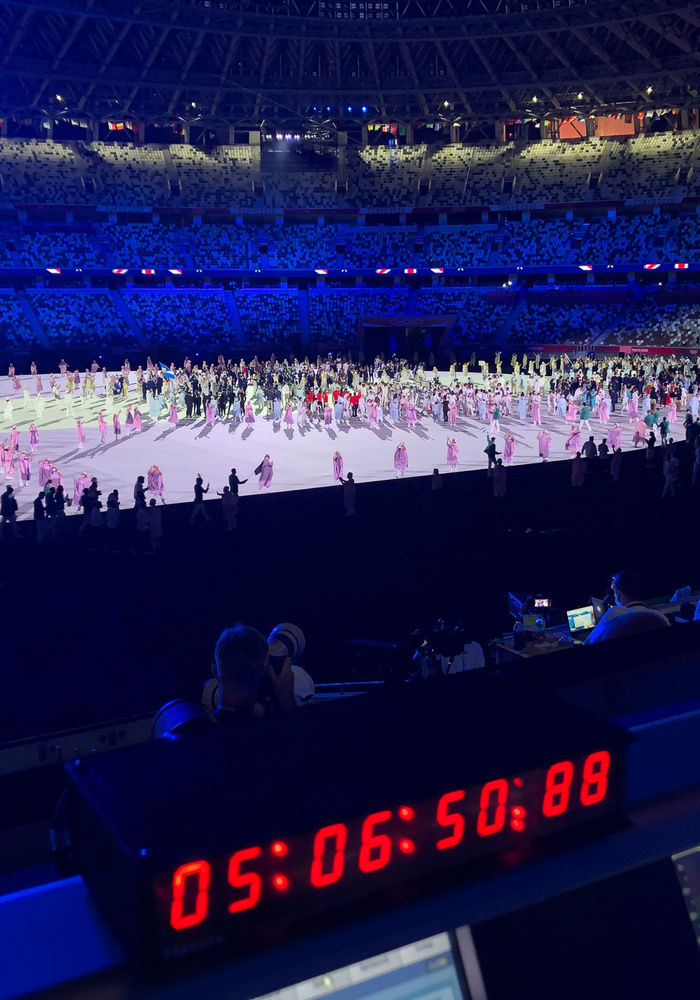The Tokyo 2020 Summer Olympics utilised a vast Optocore network for the Opening and Closing ceremonies, representing what is said to be the largest deployment of Optocore audio network devices ever seen.
This was according to Norwest Head of Special Projects, Andrew Marsh, whose company has a long pedigree of fashioning vast digital broadcast networks for spectacular Games Opening and Closing ceremonies, built around Optocore devices.
To give an idea of scale, he says, “The system we provided for our client, Hibino Corporation, comprised just under 1000 audio signals transported on each main and backup network.”
As usual, Norwest duplicated the 21-node system to provide full redundancy. “And we used every one of them,” revealed Marsh, “along with our usual set of HP switches in RSTP, using our spare pairs of fibre.”
These switches controlled the entire audio system at multiple field locations and control rooms. The network design was a collaboration between Marsh himself and John Watterson, Norwest’s Senior System Engineer at the head of a combined team effort.



